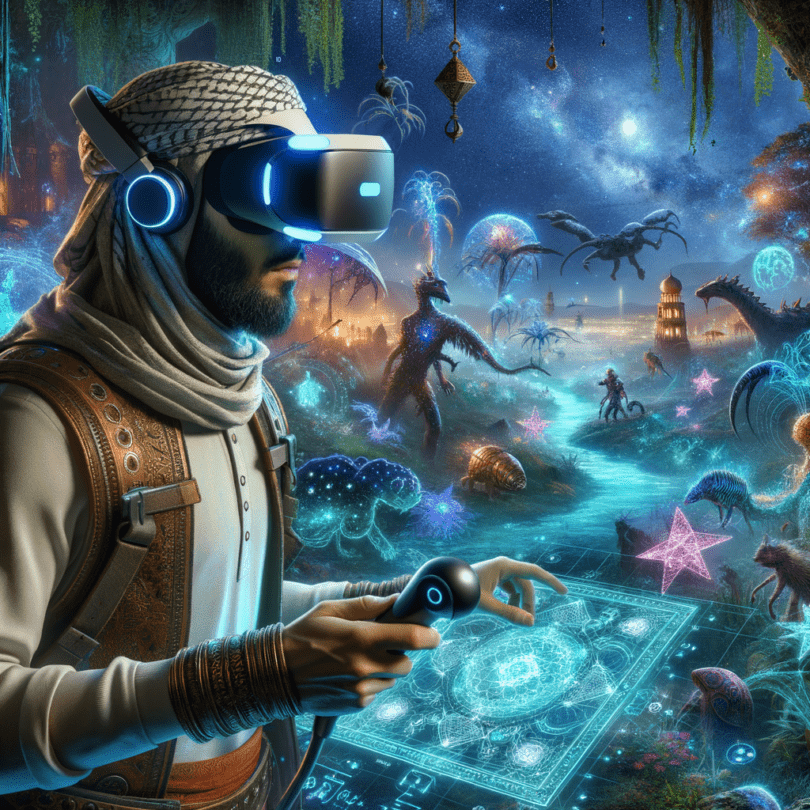In an era where we’re seeing technology evolve at an unprecedented pace, one aspect that has left a profound impact is the world of interactive gaming and Virtual Reality (VR). The interactive entertainment universe has ventured far beyond the confines of 2D screens, now offering immersive realities that craft enchanting player journeys.
Imagine viewing a virtual landscape that simulates all senses, creating a life-like experience that makes it almost impossible to differentiate between the virtual world and the real one. VR powered gaming makes this possible. The quintessential element in these interactive games is the users’ ability to influence and change the scenario within the game. By offering an immersive experience of a world that changes and reacts to the user’s decisions and actions, such games have created a dynamic paradigm shift in the world of entertainment.
The integration of virtual reality in gaming has allowed developers to transport players to meticulously crafted alternate universes. Gone are the days when you had to merely use a joystick to control actions on the screen. With VR, you become a part of the storytelling, reaching out and interacting closely with the game’s environment and characters. It brings pivotal changes to the gaming experience as we know it, ensuring all decisions made by the player are up-close and personal, bolstering a unique connection between the user and the virtual world.
So, how is interactive gaming leveraging VR technology to create these captivating journeys? Let’s delve a little deeper.
Immersive realities in gaming are nested in the concept of Augmented Reality (AR) and VR, coupled with Artificial Intelligence (AI). The blending of advanced software technology with innovative hardware appliances, including handheld controllers, omni-directional treadmills, and VR headsets offers highly interactive gaming experiences.
AR games superimpose a computer-generated image on the real world, providing a composite view that enhances the perception of reality. On the contrary, VR generates a simulated environment that is completely different from the real world, while Mixed Reality (MR) combines both real and virtual worlds to produce new environments and visualizations.
Gaming platforms like Oculus Rift, PlayStation VR, and HTC Vive have done groundbreaking work in this field. For instance, Beat Saber, a VR rhythm game on Oculus, lets the player slash the beats which are represented by small cubes in VR. Or the critically acclaimed Alyx from the Half-Life series, a title that proves the exceptional storytelling and immersive capabilities of VR to the core.
Simultaneously, the emergence of AI has also been fundamental in creating unique personalized gaming experiences. AI helps simulate interactions with characters within the game, responding unpredictably to the actions of the gamer, thus amplifying the sense of realism and personal engagement.
The ability to physically interact with the virtual environment not only intensifies a gamer’s immersion but also boosts the expansion of VR gaming in a sector beyond entertainment, such as education. The ‘gamification’ of learning using VR supports teaching methods that improve knowledge retention and student engagement.
Looking forward, the future for interactive gaming and VR is vast and wide open. Its potential is only limited by the reach of our imagination. With the exponential progression of technology, players will continue to plunge into further immersive realities, crafting journeys that are even more emotionally compelling, absorbing, and dynamic which will shape the future of interactive gaming to come.
The intersection of AR, VR, advanced AI, and gaming promises an amalgamation of intertwined realities that construct engaging journeys for gamers around the globe. So strap on your VR headset and get ready to explore this enthralling universe of immersive realities.

